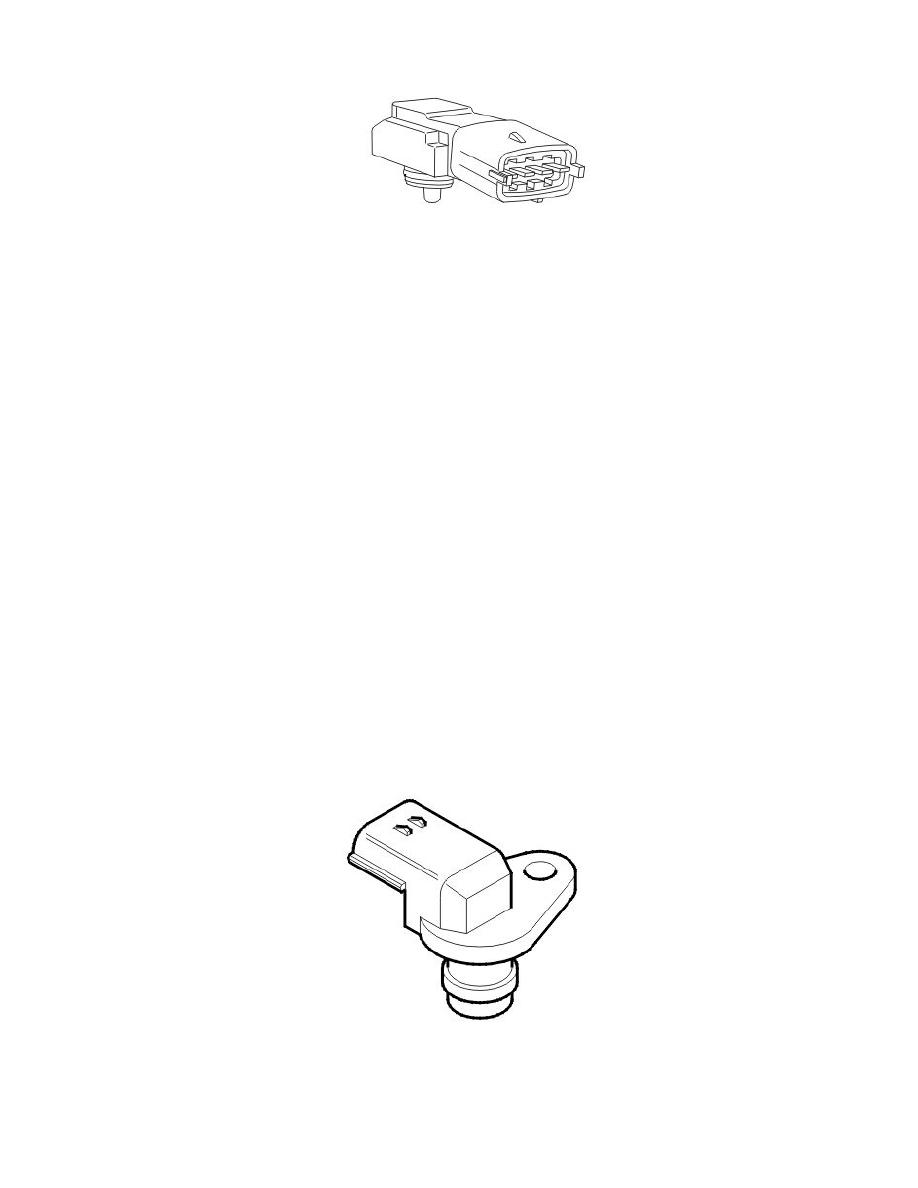V50 T5 AWD L5-2.5L Turbo VIN 67 B5254T7 (2008)

The fuel pressure sensor is combined and consisted of both the fuel pressure sensor and the fuel temperature sensor. The sensor detects the fuel pressure
(the absolute pressure) and the temperature of the fuel in the fuel rail.
The fuel pressure sensor is on the right-hand end of the fuel rail.
Fuel pressure sensor
The pressure sensor is a piezo resistive type resistor, the resistance of which changes with the pressure. Depending on the pressure in the fuel rail, an
analog signal of 0-5 V is transmitted. Low pressure results in low voltage, high pressure in high voltage.
The engine control module (ECM) then uses this signal to adjust the pressure in the fuel rail using the fuel pump control module. See also: Function See:
Powertrain Management/Computers and Control Systems/Description and Operation/Engine Control Module (ECM)/Function
The pressure sensor is supplied with 5 V and grounded in the engine control module (ECM). The pressure sensor transmits a signal indicating the fuel
pressure to the engine control module (ECM) on a separate cable.
The engine control module (ECM) can diagnose the fuel pressure sensor. Its signals (pressure and temperature) can be read using VIDA.
Note! The absolute pressure is displayed when using VIDA parameter readout to read off the fuel pressure. If there is no pressure at the fuel
rail, the atmospheric pressure will be displayed.
Hint: The relative pressure (absolute pressure minus atmospheric pressure) is displayed when reading off the fuel pressure via a manometer connected to
the fuel rail.
Fuel temperature sensor
The temperature sensor is an NTC sensor. The sensor is supplied with voltage (signal) from and grounded in the engine control module (ECM).
The resistance in the sensor changes according to the temperature of the fuel. This provides the engine control module (ECM) with a signal of between
0-5 V. Low temperature results in high voltage (high resistance). High temperature results in low voltage (low resistance).
The engine control module (ECM) uses the signal to calculate fuel density.
Camshaft position (CMP) sensor
The function of the camshaft position (CMP) sensor is to detect the flanks of the camshaft rotor. The signal from the sensor is used by the engine control
module (ECM) to determine the angle of the camshaft.
Each camshaft has four segments per camshaft revolution. A pulse wheel on the camshaft consisting of four teeth (the teeth are positioned by each flank)
is used by the camshaft position sensor (CMP) to detect the segments.
The teeth on the camshaft gear wheel are not equally wide. This allows the control module to determine which flank is detected and therefore which
